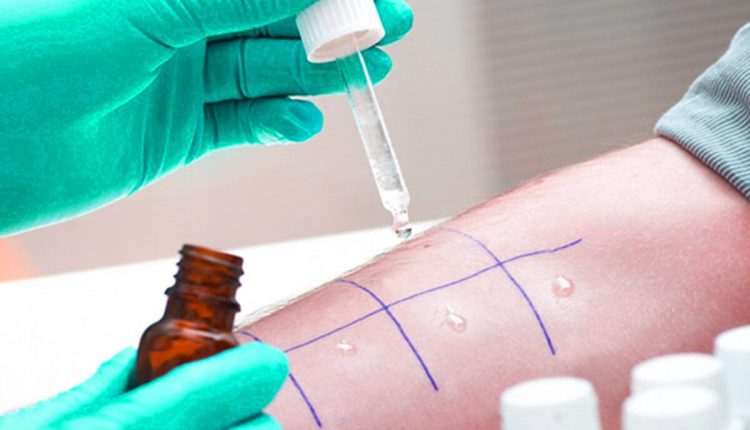
Prist test in adults and children, normal and pathological values, interpretation
The serum IGE assay test, more simply called ‘Prist test’, is a second-level allergological investigation aimed at the assay of total serum IgE; simply put, the test evaluates the concentration of these antibodies in a blood sample, taken from a vein in the arm
The Prist Test investigates the quantity of antibodies involved in allergic reactions (IgE) without establishing their nature (i.e. the allergen to which they are directed): this can eventually be investigated by other allergological techniques.
![]() First, second and third level allergy tests: to which category does the Prist test belong?
First, second and third level allergy tests: to which category does the Prist test belong?
The Prist test, like the Rast test, is a second-level allergological diagnostic investigation.
We remind the reader that allergy tests can be level I (usually the first to be performed), level II and level III (usually the last to be performed).
Level 1 allergy tests
- skin prick test skin provocation test
- skin provocation patch test.
Second-level allergy tests
- serum IGE assay or Prist test;
- radioallergoabsorption test or ‘Rast test’.
Third-level allergy tests
- oral provocation test;
- bronchial provocation test with methacholine;
- conjunctival provocation test;
- nasal provocation test.
Elimination tests are also associated with these tests in some cases.
The advantages of the blood allergy test (Prist test and Rast test) are excellent reproducibility over the entire measuring range, a very high specificity (due to the specific allergen-IgE binding), and a higher sensitivity than skin tests (prick test and patch test).
In general, this method of blood testing compared to skin tests has a great advantage: it is not always necessary for the patient to discontinue treatment with antihistamines (in contrast to skin tests) and can also be performed if the skin condition is such that skin allergy tests cannot be performed (e.g. in the case of eczema, extensive dermatitis, urticaria in active phase, skin anergy).
In some cases, blood allergy tests are used in conjunction with skin allergy tests to increase diagnostic accuracy.
Prist test and Rast test are used as the first investigation only in situations that make skin investigations (Prick test and Patch test) unfeasible
If the result of the Prist test is normal, but the person nevertheless presents symptoms of an allergy, we may be dealing with a false negative (patient appearing healthy when in fact he or she is allergic) and it is therefore advisable to perform the Rast test anyway: in some cases, in fact, IgE is not altered, even though the person is allergic.
Why is it measured?
The Prist Test evaluates the total concentration of IgE antibodies in the blood, but it does not identify specific allergens: other conditions and diseases can in fact cause an increase in total IgE such as parasitic infestations or infectious diseases (see section ‘Causes of high total IgE’).
When is the test prescribed?
The Prist test is prescribed if the patient manifests symptoms and signs of an allergy: thanks to this test, the doctor is assisted in his diagnostic process, which includes anamnesis, objective examination and, if necessary, other tests.
No specific preparation is required to perform the Prist test
Fasting is not necessary. It is generally not necessary to discontinue antihistamines and corticosteroids.
A simple venous blood sample from an arm is sufficient for the Prist test
Normal values
The total IgE titre is expressed in kU/L and changes over the years: the normal value is a few kU/L at birth, while from the age of 10 and throughout adulthood the normal value is between 100 and 200 kU/L.
Interpretation of results
In general, if the result of the Prist test is normal, it means that the patient is not allergic; if, on the contrary, the IgE is above 200 kU/L, the patient is likely to be allergic and needs to undergo further tests to determine the substance responsible for the allergy.
If IgE is elevated, however, this does not necessarily mean that the patient is allergic, as an increase in IgE may be related to other conditions and diseases (see next section).
If IgE is low or normal, it is also not certain that the patient is non-allergic.
Causes of high total IgE
Total IgE is increased under various conditions:
- sensitisation to a certain allergen (allergopathy);
- presence of parasites (e.g. ‘pinworms’, i.e. intestinal worms);
- mononucleosis;
- liver cirrhosis;
- chronic cigarette smoking.
Causes of low total IgE
Low levels of total IgE are generally not associated with disease.
Is the Prist test reliable?
The Prist test is certainly a reliable test, but it is a non-specific investigation since it does not provide any information on the nature of the allergen, which makes other tests necessary to identify the specific substance triggering the allergy.
In simple terms, it is not possible to make a diagnosis of allergy based on the determination of total IgE alone, as a high value does not always indicate allergy, while a low or normal value does not always exclude allergy.
Is the Prist test dangerous?
The Prist test is completely harmless.
Is the Prist test painful or annoying?
The Prist test is not painful although some more anxious patients may experience discomfort from the blood sample.
Read Also:
Emergency Live Even More…Live: Download The New Free App Of Your Newspaper For IOS And Android
Adverse Drug Reactions: What They Are And How To Manage Adverse Effects
Rescuing A Patient With Mental Health Problems: The ALGEE Protocol
First Aid: 6 Must-Have Items In Your Medicine Cabinet
Allergies: Antihistamines And Cortisone, How To Use Them Properly
Asthma, The Disease That Takes Your Breath Away
Why Become A Mental Health First Aider: Discover This Figure From The Anglo-Saxon World
Anxiety: A Feeling Of Nervousness, Worry Or Restlessness
Firefighters / Pyromania And Obsession With Fire: Profile And Diagnosis Of Those With This Disorder
Intermittent Explosive Disorder (IED): What It Is And How To Treat It
Management Of Mental Disorders In Italy: What Are ASOs And TSOs, And How Do Responders Act?
ALGEE: Discovering Mental Health First Aid Together
Asthma: From Symptoms To Diagnostic Tests
Severe Asthma: Drug Proves Effective In Children Who Do Not Respond To Treatment
Asthma: Tests For Diagnosis And Treatment
Allergic Asthma: Causes, Symptoms, Diagnosis And Treatment
Allergies: What Is Their Hidden Impact On Mental Health?




